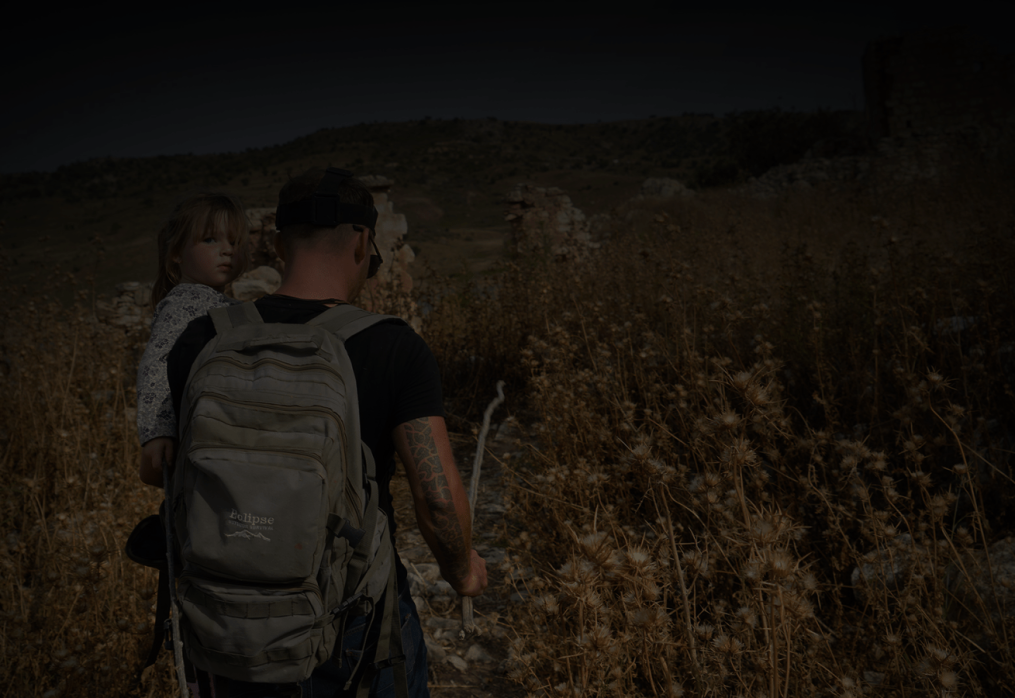The Art of Found Footage: How the Technique Heightens Suspense in “Its Name Was Mormo”
Crafting Fear from the Unseen: Exploring the Mastery of Found Footage in ‘’Its Name Was Mormo’’
The found footage technique, which is based on the concept that the material we see has been discovered and recorded by ordinary people, has revolutionized the horror genre by immersing viewers in a deeply realistic experience. “Its Name Was Mormo” is a prime example of how this technique can amplify the atmosphere of terror, using the format to create a chilling and visceral experience.
The film follows a family of three—Mark, Marcela, and their young daughter Mia—along with their puppy Romeo. After moving to a small, remote town, the film initially presents an ideal family life, with a home full of light and warmth. This cheerful and cozy tone sharply contrasts with the horror that will soon unfold, and found footage plays a crucial role in this transition. By beginning with images that reflect a happy and normal family life, the contrast with the impending terror feels even more striking.
The premise of “Its Name Was Mormo” takes a dark turn when the family discovers a cursed box in a desolate village. From this moment on, the atmosphere changes drastically. The found footage technique is essential in intensifying this transformation. Instead of a conventional narrative that might distance the viewer, the handheld camera and found footage style make every small detail feel more immediate and real. The sense of reality provided by the found footage makes the horror a more personal and intimate experience.
Check Parasite> thriller movie
As the film progresses, the change in atmosphere is palpable. The house, once filled with light and life, becomes dark and oppressive. The constant family arguments, unpleasant smells, and unsettling whispers that seem to fill every corner feel much more overwhelming when presented through the lens of a home video. Found footage captures these moments in a raw and unfiltered way, making the horror more tangible and disturbing.
One of the most effective aspects of this technique in “Its Name Was Mormo” is its ability to generate a sense of intrusion. By witnessing the events through the family’s own recordings, the viewer becomes an unwanted voyeur into their private lives. The strange noises and voices heard in the house become more chilling because they seem to emerge from the everyday lives of ordinary people. This closeness to the characters and their environment contributes to a deep immersion in the horror.
Furthermore, the found footage technique allows for a subtle but effective manipulation of viewer perception. The shaky camera movements, low-resolution image quality, and absence of a traditional soundtrack create a feeling of instability and disorientation. These elements heighten suspense, as the viewer is never entirely sure of what they are seeing or hearing. Security camera footage and home recordings become tools to amplify fear by suggesting that the terrifying could be happening anywhere and at any time.
The horror atmosphere in “Its Name Was Mormo” is also reinforced by the gradual disintegration of the family. Found footage, by showing the tensions and emotional breakdowns so directly, makes the change in family dynamics feel even more devastating. The technique amplifies the emotional impact of the situation, making each confrontation and sign of psychological deterioration sharper and more disturbing.
In conclusion, “Its Name Was Mormo” is a brilliant example of how found footage can heighten the atmosphere of terror in a film. The technique not only provides a more immersive and realistic experience but also amplifies the emotional impact of the horror. By using home recordings to document the transformation from a happy family life to a nightmarish ordeal, the film makes the most of found footage’s potential to create a horrifying experience that is both unsettling and deeply disturbing.
